7 Best Types of Lunge Variations (with Pictures!)
The lunge is a classic lower body exercise popularized by its wide range of motion, ease of accessibility and functionality. Because of this popularity however, quite a number of different lunge variations have popped up over the years.
With so many variations to choose from, picking the right one might seem to be a confusing task.
Fortunately, the majority of these variations serve entirely different purposes, and as such it is simply a matter of picking the right exercise for your needs.
Although it will depend on your training goals and fitness level, it is best to start with the classic forward lunge exercise. Master its form and general technique prior to moving on to more specialized variations, like the lateral lunge, pendulum lunge or curtsy lunge.
What are the Characteristics of a Lunge?
The “lunge” is not only a type of exercise but also a fundamental movement pattern where one leg is driven forwards with the knee bent, as if kneeling with the opposite leg. Naturally, because this is a rather broad definition, other aspects should also be considered.
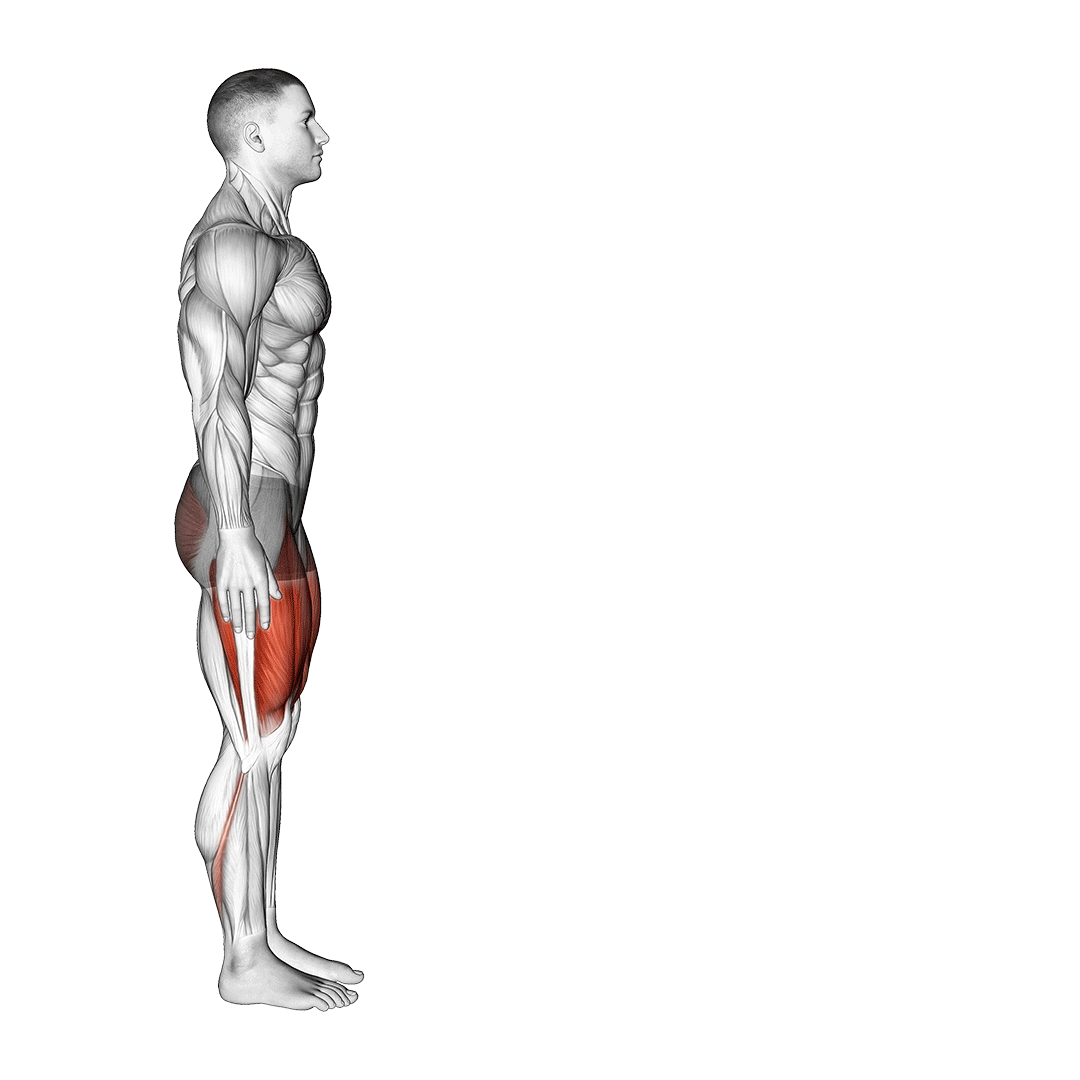
General movement pattern aside, lunges are performed with marked use of quadriceps-driven knee flexion, and little to no involvement of the upper body. Most often, the movement is meant to produce a unilateral training stimulus, requiring the lifter to perform the variation with both legs separately.
The majority of lunge variations will work all the major muscle groups of the legs, but most often the quadriceps femoris will take the role as primary mobilizer.
A Note on Equipment Usage and Variation
Because most lunges can be performed with any number of different types of equipment (or none at all) - for the sake of posterity - we have only listed the different fundamental movement patterns that make a variation.
For example, rather than listing a bodyweight and kettlebell forward lunge as separate variations, we’ve simply listed forward lunges.
Rest assured, this does not mean that the weighted and unweighted forward lunge are any different as far as mechanics go; It is up to you to decide what equipment to use.
Lunge Variations
1. The Standard Forward Lunge
Otherwise simply referred to as the “lunge”, forward lunges are the baseline lunge exercise that all novice exercisers should learn prior to trying other variations.

The forward lunge is characterized by its unilateral movement pattern where one leg is stepped forwards and the opposite extends behind the body, both knees being bent and the body’s weight shifting towards the foreleg.
Like most other lunge variations, lunges are a dynamic closed chain compound movement that may be performed entirely unweighted or with free weights.
Muscles Worked
Forward lunges primarily target the quadriceps, but will also work the hamstrings, glutes and calves as well. This muscular recruitment is significantly more intense with the forward-facing leg, rather than the back leg.
Benefits as a Lunge Variation
The forward lunge is known for being highly dynamic and functional, making it the perfect exercise for athletes, bodybuilders and ordinary individuals wishing to improve their general lower body fitness.
Furthermore, the quadriceps-focused movement pattern of the forward lunge makes it excellent as both a primary compound movement within a calisthenics workout, or as a supplementary exercise to more intense movements like the back squat or deadlift.
How-to:
To perform a repetition of the conventional lunge, the lifter will stand upright with their feet approximately hip-width apart, core braced and spine stacked in a neutral manner.
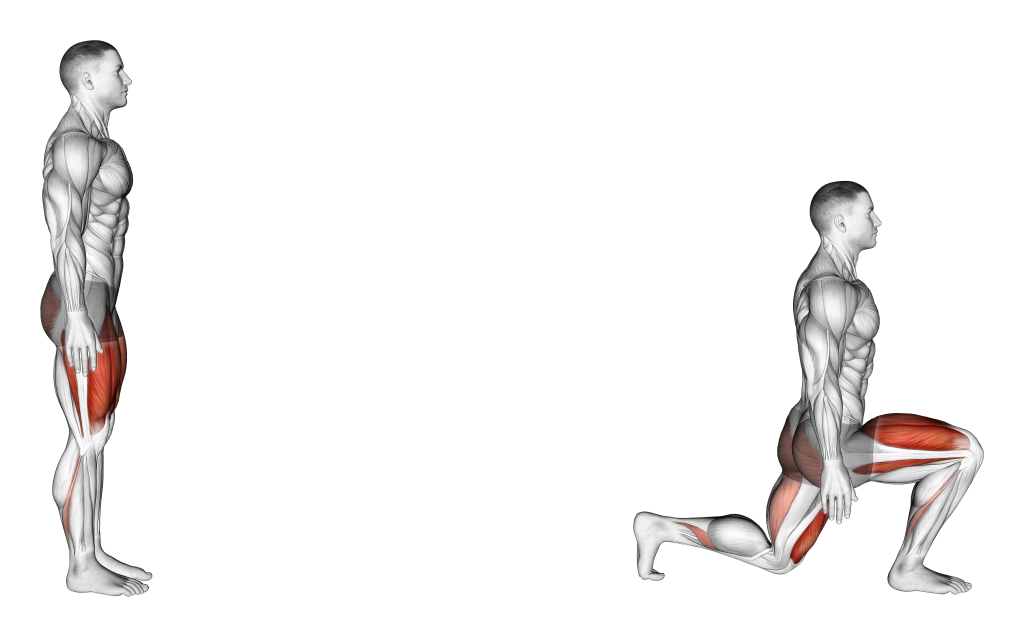
Then, keeping the chest upright, the lifter will take one wide step forwards, following through with this step by bending the knees and flexing the hips slightly. The backwards-facing leg should remain where it was at the start of the repetition, its knee bending simultaneously with the forward-facing leg.
The lifter will continue to bend their legs in this way until both knees are bent at around a 90 degree angle, with the body’s weight primarily on the forward-facing leg.
Once reaching this 90-degree flexion point, the lifter will drive through their foreleg and return to the original standing position.
At this point, the repetition is completed. Repeat with the opposite side as well.
2. The Backwards Lunge/Reverse Lunge
As one can guess from its name, the backwards lunge is simply a lunge performed with one leg moved backwards, rather than one leg being stepped forwards.
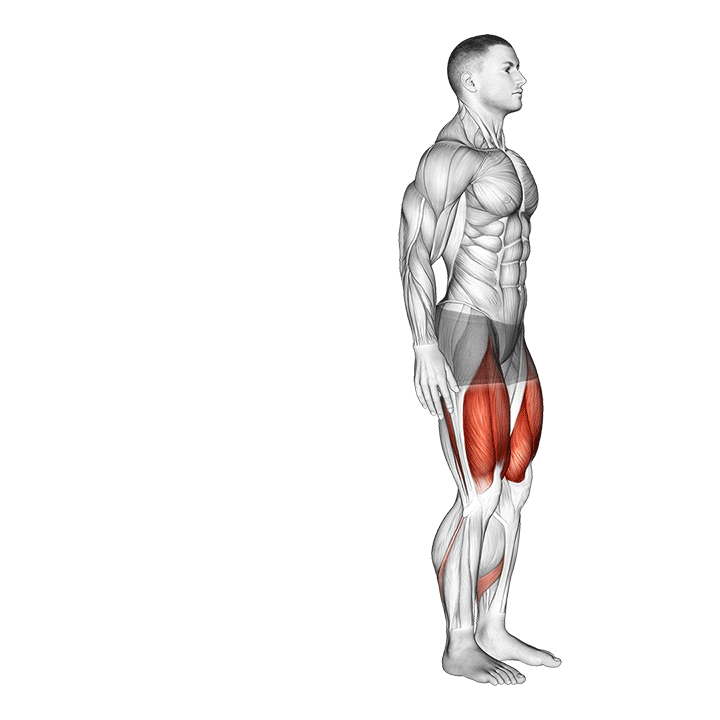
While this may seem to be a small change, the reverse lunge is known for placing markedly less stress on the knees, as well as a somewhat more evenly distributed training stimulus.
In most other aspects, the backwards lunge is much the same as its forwards counterpart - that being a highly dynamic multi-joint exercise favored by athletes for their functionality.
Muscles Worked
Backward lunges target all the major muscles of the legs in a comprehensive manner.
Benefits as a Lunge Variation
The backwards lunge is considerably lower impact than its forwards counterpart, making it excellent for individuals at risk of knee strain.
In addition, backwards lungs share the same benefits as their forwards counterpart, such as being loadable, highly accessible, and markedly effective when it comes to building functional lower body strength.
How-to:
To perform a repetition of the backwards lunge, the lifter will stand upright with their feet set a comfortable distance around hip-width apart, head facing forwards and core braced. If performing the exercise with weights, the lifter may grip them at this point.
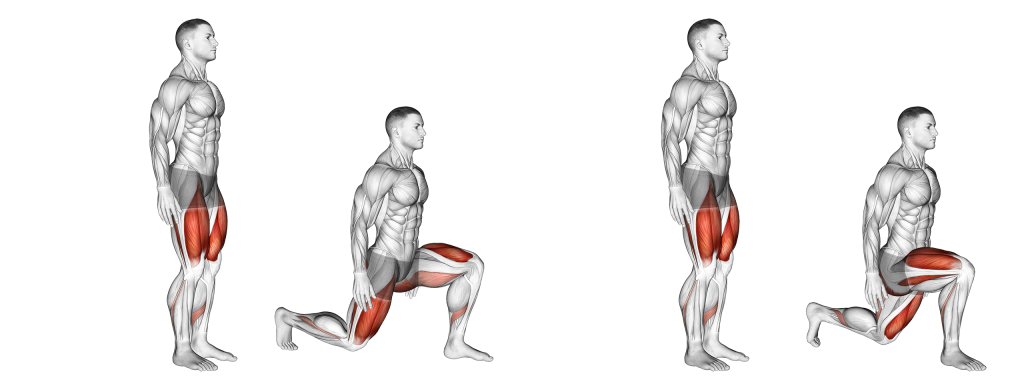
Taking one step backwards, the lifter will simultaneously bend both knees as they do so, the hindleg landing on the balls of the foot. They will follow this downward bend, landing on the heel of the rear leg and keeping the torso upright all throughout.
Once both knees are bent at a 90 degree angle, the lifter will drive through their back-heel and return to the starting standing position.
At this point, the repetition is complete - although the lifter should ensure that both sides are exercised equally.
3. The Side Lunge/Lateral Lunge
Another lunge variation with a rather obvious name - the side lunge is much the same as its backwards and forwards counterparts, only with the lifter taking an exaggerated step to the side.
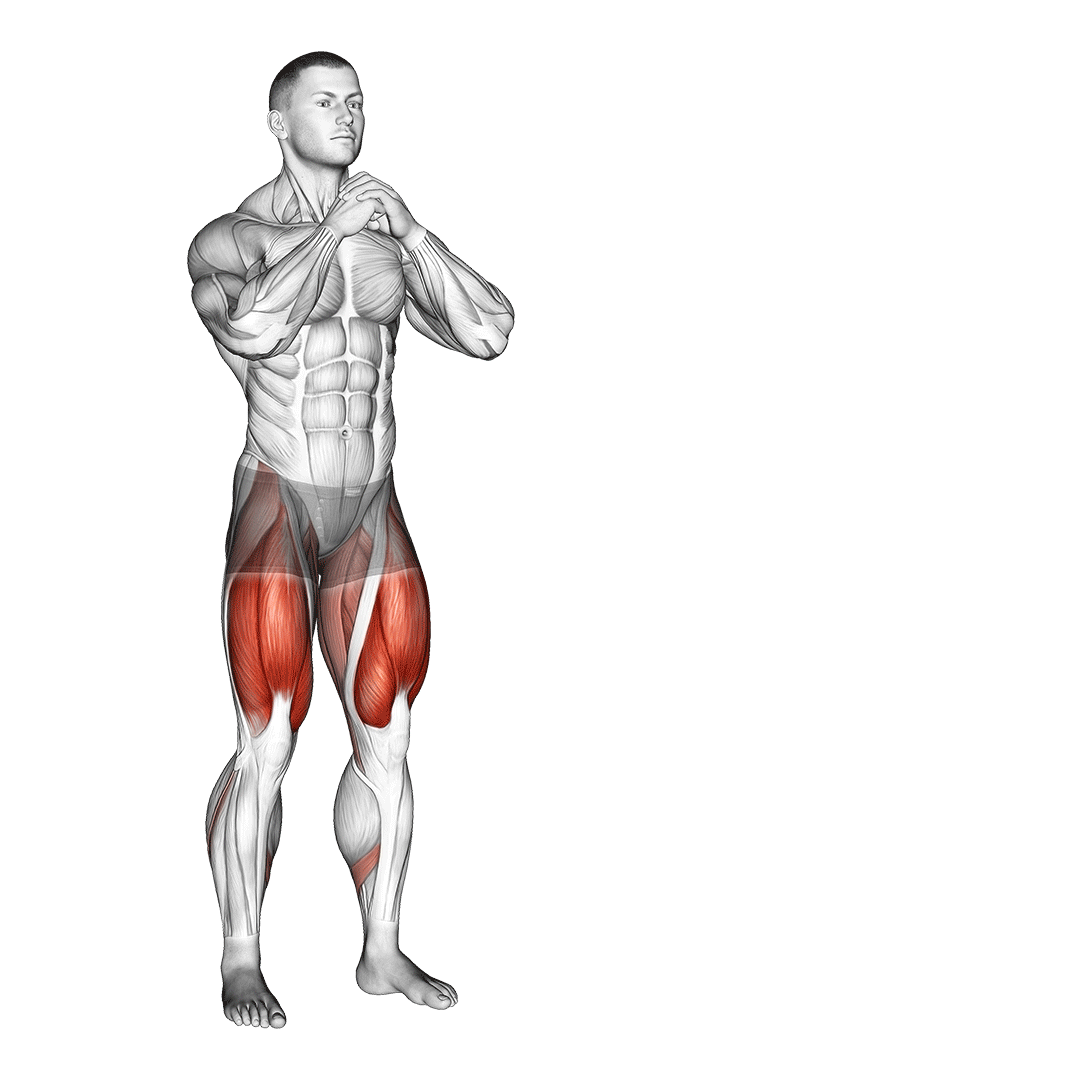
This change in direction greatly reduces the amount of strain placed on the knees, as well as a significantly greater emphasis on the muscles of the inner thighs. The side lunge may be programmed, loaded and otherwise utilized in much the same manner as other lunge variations in this article.
Muscles Worked
The lateral lunge works the quadriceps and glutes - but will particularly recruit the hamstrings and the adductors the most.
Benefits as a Lunge Variation
The lateral lunge, like the reverse lunge, is considerably easier on the joints of the lower body. This is further compounded by the greatly reduced need for balance with the lateral variation, as it is simply sinking into a side step, rather than a large forwards or backwards one.
In addition, side lunges are perfect for strengthening and reinforcing the adductor muscles of the legs, leading to greater leg adduction mechanics and stability.
How-to:
To perform a repetition of the lateral lunge, the lifter will stand upright with their feet set slightly wider than hip-width apart. If performing the exercise with weighted equipment, they may be held in both hands.
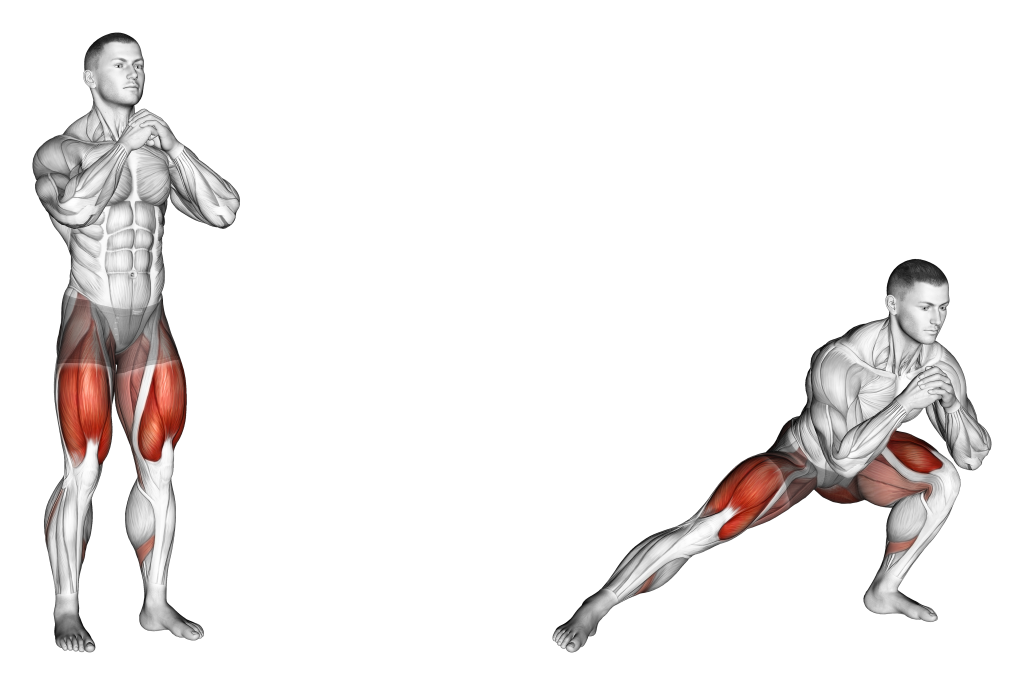
Now in the starting stance, the lifter will take a wide step to the side with one leg, bending it at the knee and retracting the pelvis slightly as they do so. The remaining leg should stay straight, angling to the side at the hip joint as the first leg bends atop the floor.
This is often the portion of the exercise that many get wrong, as they will bend both knees so as to reach proper depth. Only the first leg (the one stepped to the side) should bend down, with the other leg remaining extended but angled to the side.
Once reaching the limit of their mobility, the lifter drives through the heel of their bent leg, returning to the original starting position so as to complete the repetition.
4. The Walking Lunge
The walking lunge takes the standard lunge’s already dynamic movement and brings it to an even more functional level.
The exercise has the lifter perform a standard forward lunge, but rather than stepping back into a standing position with each repetition, they will instead follow with another forward lunge using the opposite leg.

Not only does performing the lunge in this way greatly increase time under tension and functionality, but will also burn a significant number of calories and greater carryover to athletic activity.
Like most other lunge variants, the walking lunge is a dynamic compound exercise traditionally performed as a bodyweight exercise, but presents the option for the use of weighted equipment if needed.
Muscles Worked
Walking lunges place the most emphasis on the quadriceps femoris muscles, but will also work the calves, glutes and hamstrings as well.
Benefits as a Lunge Variation
As touched upon previously, the walking lunge shares all the same benefits as the forward lunge - only to a more effective level.
In addition, walking lunges also excel at achieving certain training aspects that other lunge variants do not. Among these are burning more calories, improving the lifter’s athletic ability and reinforcing knee flexion biomechanics in a highly dynamic manner.
How-to:
To perform a walking lunge, the lifter needs to simply perform several forward lunges in succession.
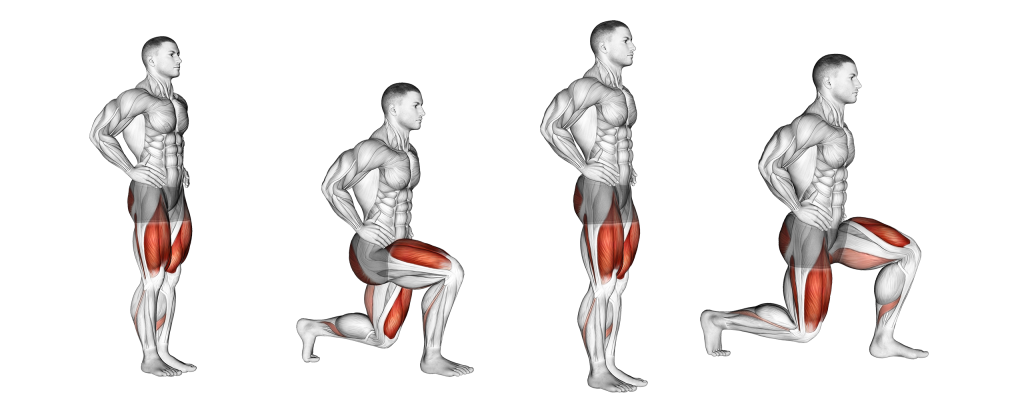
In order to do so, they will first adopt an upright stance with the feet set around hip-width apart, toes facing forwards, core braced and weighted implements held at both sides (if present).
Now in the correct stance, the lifter takes one exaggerated step forward, following the movement by bending both knees simultaneously. The hind leg remains in the same place as it started, bending downwards for stability.
Once both knees are bent at a 90 degree angle, rather than stepping the forward-facing leg back, the lifter will instead step their hind leg forwards and rise into a standing position.
Once in this second standing position, the lifter repeats the forward lunge with the opposite leg, continuing so on until reaching a pre-specified length of time or distance.
5. The Curtsy Lunge
The curtsy lunge is unique in that it requires the lifter to cross one leg behind the other in a motion that is similar to that of the reverse lunge.
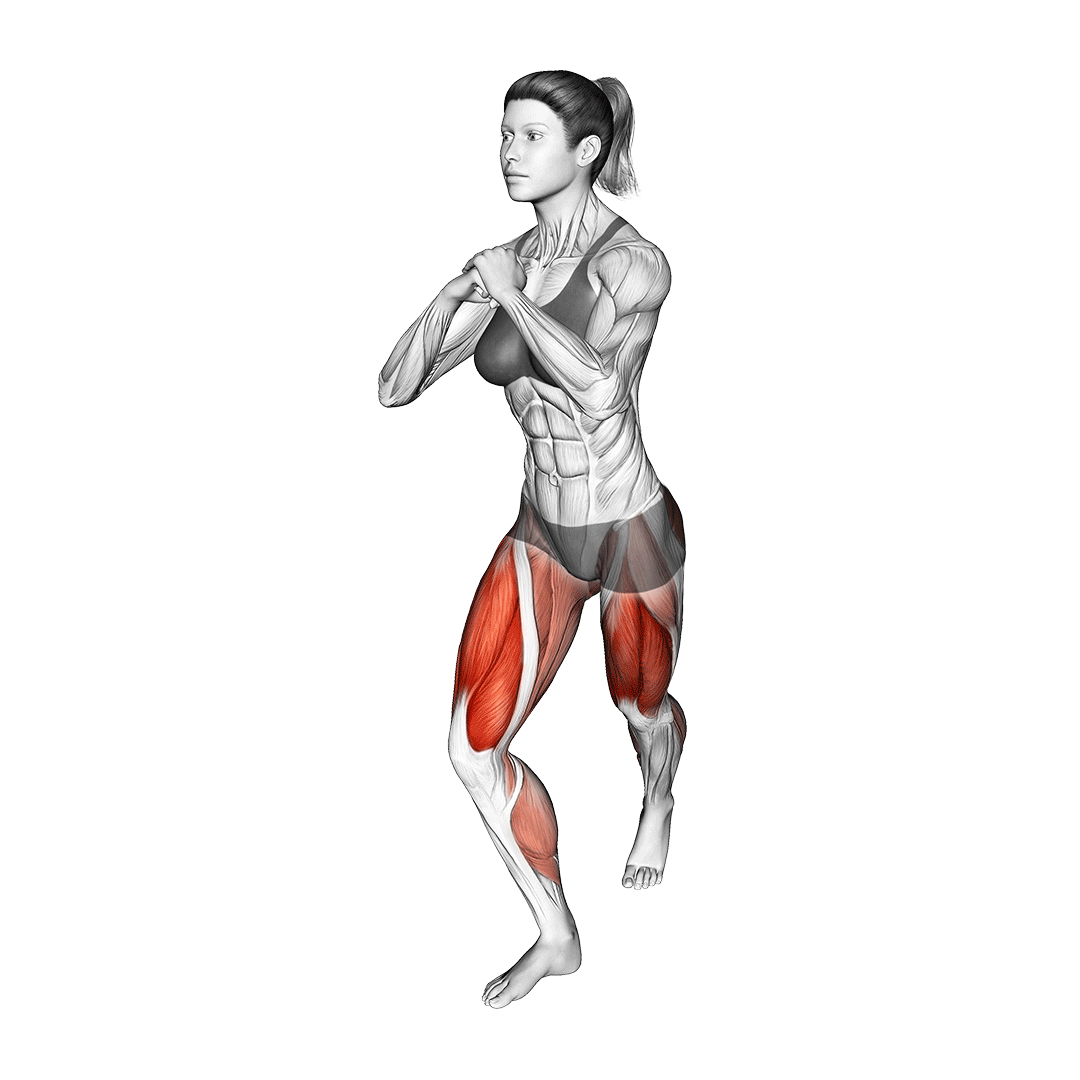
This change in angle of movement elicits a greater level of recruitment in a number of muscles overlooked by other lunge variations - as well as challenges the lifter’s sense of balance and coordination to a greater degree.
As is the case with most other exercises in this article, the curtsy lunge can be performed with or without equipment, and is a useful tool for reaching a wide variety of different training goals.
Muscles Worked
Apart from the usual major muscle groups - like the quads, gluteus maximus and hamstrings - the curtsy lunge also targets the adductor muscles alongside the deeper muscles of the glutes muscle group.
Benefits as a Lunge Variation
The main benefit of curtsy lunges lies in its capacity to train muscle groups that are otherwise left forgotten by most other lower body exercises - including conventional lunges as well.
This more comprehensive lower body strengthening stimulus, in addition to its functionality, make it perfect for athletes or individuals who wish to maximize the capabilities of their lower body.
How-to:
To perform a curtsy lunge, the lifter will stand with their feet set shoulder-width apart, gripping a pair of dumbbells or kettlebells if performing the exercise with weight.
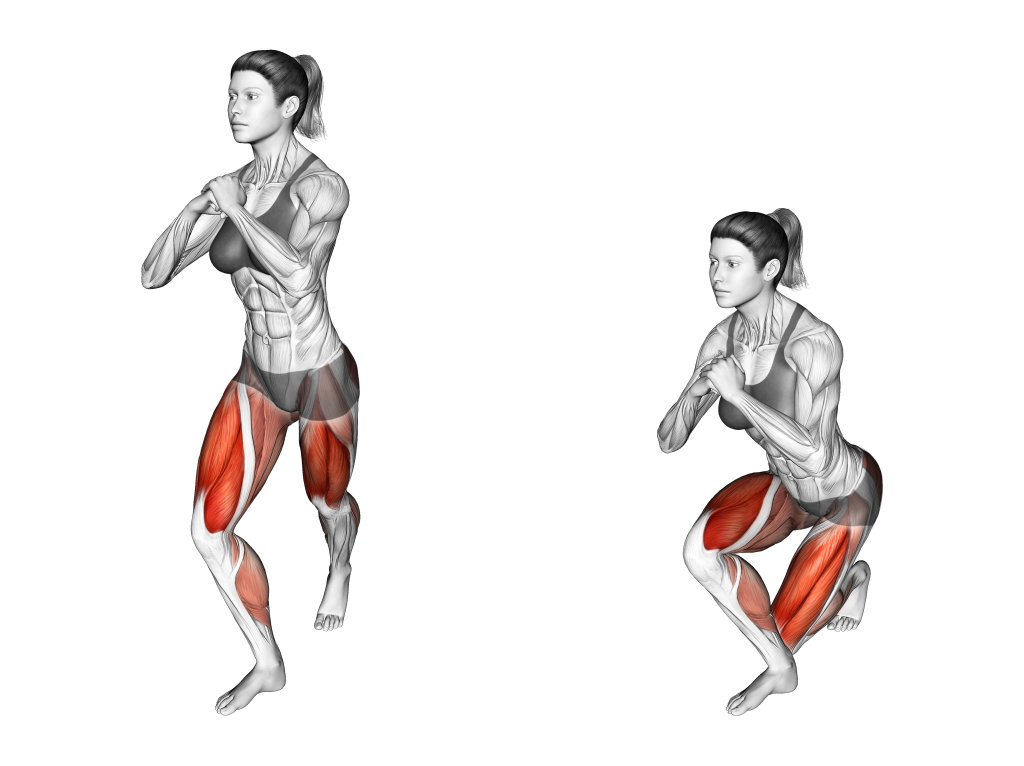
Then, keeping their weight on one leg, the lifter will bend their other leg backwards and around the stationary leg. This will cross the second leg behind the stationary leg, as if performing a curtsy.
Once the second leg is planted a foot or two behind the first leg, the lifter will bend both knees until the stationary leg’s thigh is parallel to the floor.
The repetition is considered complete once the lifter has returned to their original standing position.
Repeat with the opposite leg.
6. The Pendulum Lunge
The pendulum lunge is a cross between the forward and reverse lunge, featuring the movement patterns of both within a single repetition. While considerably more taxing and time-consuming, this also creates a far more intense exercise that shares the benefits of both.

Like its two constituent exercises, the pendulum lunge can be performed with bodyweight alone or with the addition of weighted equipment. However, because of the greater intensity of each repetition, programming the pendulum lunge may call for somewhat less volume with each set.
Muscles Worked
Pendulum lunges are particularly effective at targeting the hip flexors/extensors, but will nonetheless also target the remaining muscles of the legs - that being the quadriceps, glutes and hamstrings.
Benefits as a Lunge Variation
The pendulum lunge can be considered as a progression from the front or backwards lunge, as it is essentially both exercises combined into a single fluid movement.
This takes many of the same benefits as the two aforementioned exercises, while simultaneously creating a wider range of motion and greater recruitment of the posterior chain.
How-to:
To perform the pendulum lunge, the lifter will stand with their feet wider than hip-width apart, gripping their choice of training implement if needed.

Taking one step forwards, the lifter will then bend the knees of both legs until reaching a 90 degree angle of flexion. From this point, they will drive through the heel of their front leg - rising back into a standing position.
Rather than resting the foot on the ground however, the lifter will follow through with the movement and draw their leg behind their body, as if performing a reverse lunge.
Once the leg is firmly planted behind them, the lifter will once again bend their knees until reaching proper depth - before finally returning to a standing position. At this point, the repetition is considered complete.
Note that certain versions of this exercise call for the lifter to raise their knee up to stomach height prior to transitioning to the reverse lunge. This is optional, but can nonetheless improve muscular recruitment.
7. The Power Lunge
Power lunges are a highly explosive progression from the reverse lunge, building not only strength and muscle mass in the lower body, but also power.
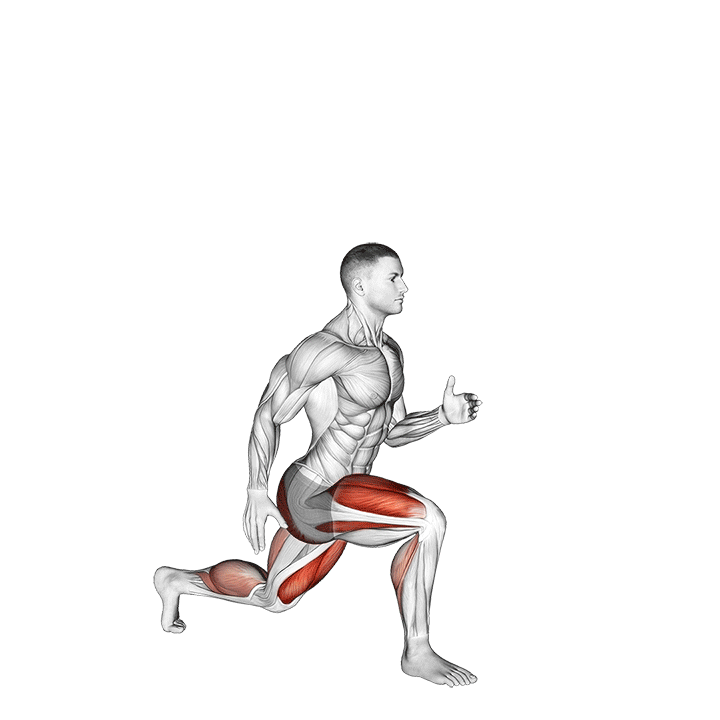
The power lunge begins with the lifter performing a standard backwards lunge prior to swinging the back leg forwards into a knee-up. As they do so, they will launch off their stationary leg, sending them into the air.
Although less common than most other lunge variations, the power lunge can be invaluable for sprinters, martial artists and weightlifters seeking unilateral lower body explosiveness development.
Muscles Worked
Power lunges work the quadriceps, glutes, hamstrings and calves quite effectively.
Benefits as a Lunge Variation
As mentioned earlier, the power lunge is one of the best lunge variants for building lower body explosiveness. However, in addition to this, it is quite useful for developing a sense of coordination and balance while in a unilateral stance.
How-to:
To perform a power lunge, the lifter will stand upright with their feet shoulder-width apart.

Performing a reverse lunge by taking one step back and bending until both knees are at a 90 degree angle of flexion, the lifter will rapidly push through their back leg and push it forwards. This should be immediately followed by raising the bent leg upwards into a knee-up.
As the moving leg is drawn upwards, the lifter will simultaneously launch off their stationary leg by bending rapidly at the knee and pushing through their toes.
To complete the repetition, the lifter will land on both feet in a standing position.
Which Lunge Variation Should You Pick?
With all the choices of lunge available, it can be difficult picking the right one for your workout.
While the general advice is to first master the forward lunge, if you’ve already done so, the next step is to take your training needs into account.
Exercises like the power lunge or walking lunge are best for more functionally-geared workouts, whereas the lateral and reverse lunge are excellent for building strength and mass.
Regardless of which variation you pick, remember that lunges also come with their own inherent set of disadvantages. For the best results, perform not only lunges, but a variety of different lower body exercises such as the leg press, back squat and deadlift.
References
1. McClellan, Tim CSCS; Bugg, Barrett S. CSCS. Lunge Variations to Enhance Specificity in Tennis. Strength and Conditioning Journal 21(6):p 18, December 1999.
2. Bezerra ES, Diefenthaeler F, Nunes JP, Sakugawa RL, Heberle I, Moura BM, Moro ARP, Marcolin G, Paoli A. Influence of Trunk Position during Three Lunge Exercises on Muscular Activation in Trained Women. Int J Exerc Sci. 2021 Apr 1;14(1):202-210. PMID: 34055138; PMCID: PMC8136561.
